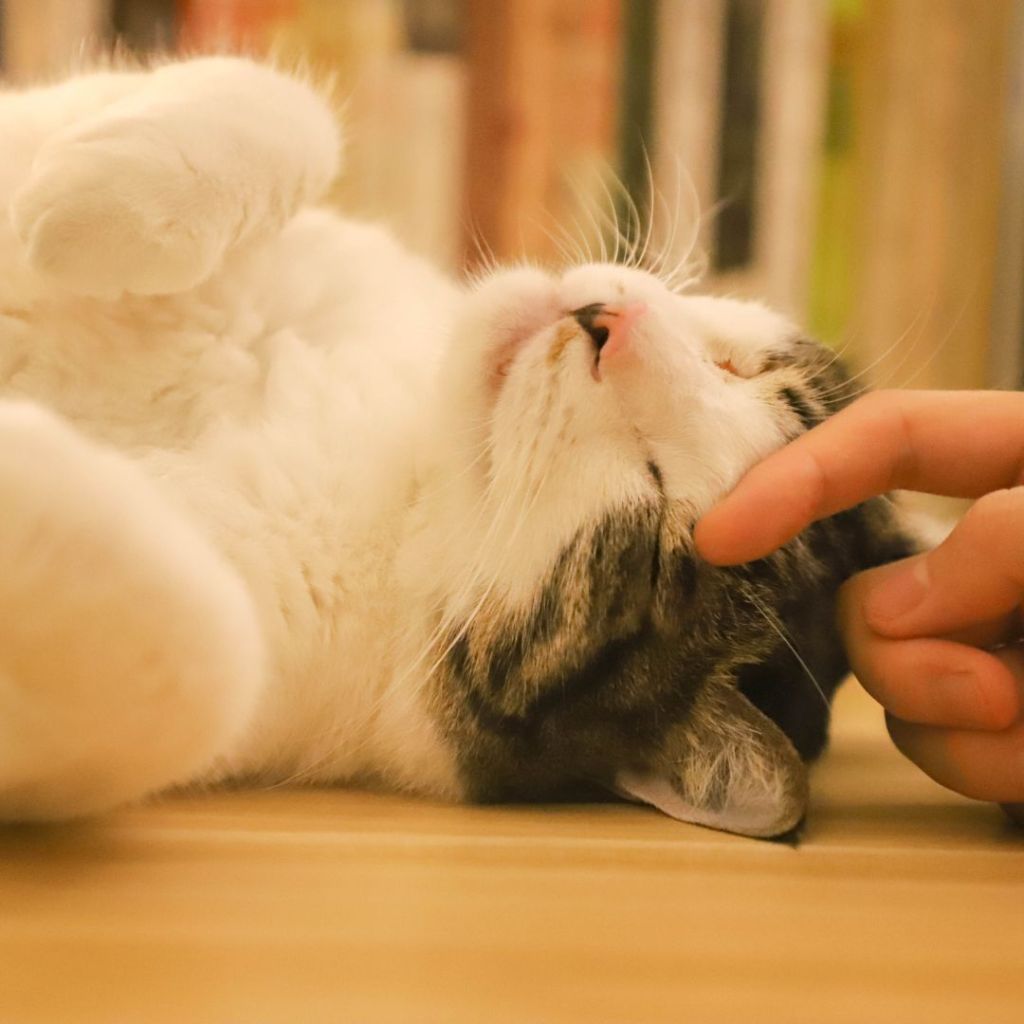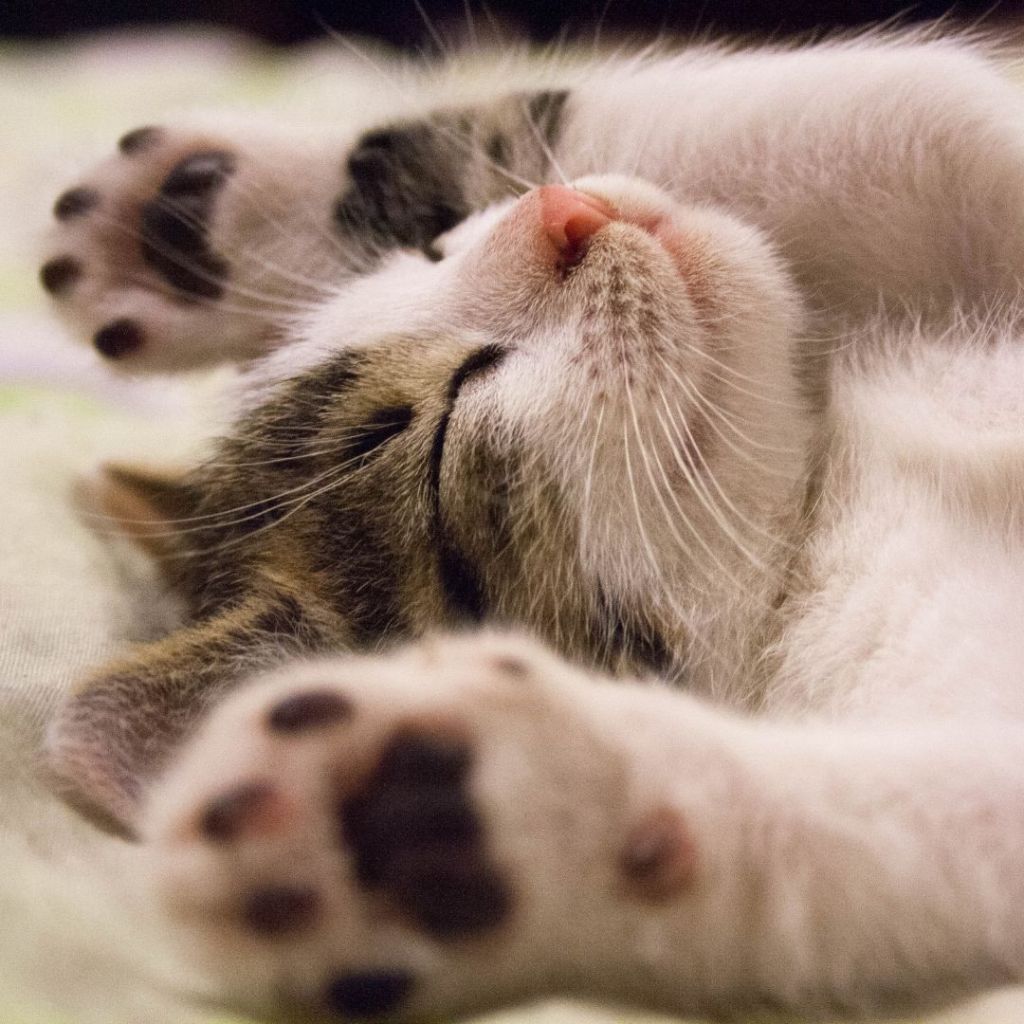
Why Does My Cat Lie On Its Back? Reasons Why Your Kitty Sleeps Topsy-Turvy
15 Jul 2022.
Cats are constantly expressing themselves in a variety of ways. There’s a lot your kitty can tell you through his meows, facial expressions or even with his tail! But what about when your cat is lying on his back? What could your topsy-turvy feline be trying to say? The answers can vary, and some of them may surprise you. Below, Cat in a Flat explains what it means when your cat is lying on their back.
Table of contents

Your cat lies on its back because he trusts you
Most of the time when your cat is lying on its back it means he is feeling comfortable and happy! The belly is one of the most sensitive parts of your furry friend’s body. So, when your cat lies on its back, he might be exposing his belly to you as a show of absolute trust.
Your fur friend feels safe enough with you that they are okay with showing you their sensitive belly—a great sign of a strong bond between you and your kitty! However, as tempting as Mr Whiskers’ soft tummy may seem, an exposed belly doesn’t always mean your cat will appreciate belly rubs. There are a few ways to know if your cat is feeling happy. Watch their body language to know if your kitty wants you to approach with belly rubs and when they’d like you to stop!
Signs your cat is content:
- Relaxed posture
- Purring
- High-pitched meows
- Ears facing forward
Can my cat be annoyed when he lies on his back?
Humanity has been trying to understand cats for hundreds of years and we still don’t always know why our furry weirdos are the way they are! Even the domestic cat’s origins and feline history remains something of a mystery to us. So, when in doubt, always assume multiple possibilities for your furry friend’s strange behaviour. This means that it is possible your cat is lying on his back because he’s annoyed.
A supine position can be a defensive pose for an annoyed kitty. After all, it frees up all four sets of claws for attack! In these situations, it can be tempting to use your hand or foot to play rough with Mr Whiskers. However, you should avoid antagonising or playing rough with your cat when he is lying on his back. This will only annoy your feline further and can result in an uneasy relationship. Stick to these guidelines for playing safely with your cat and watch his or her other body language to gauge whether they’re happy or annoyed.
Signs your cat is annoyed:
- Ears flattened back against the head
- Wide eyes with dilated pupils
- A twitching tail, or tail curled around the body and tucked in
- Low-pitched meows
Is my cat showing submission when lying on its back?
If you live in a multi-cat household, it’s likely that one of your fur friends will be more submissive than the other. Although cats can make friends, there is still a strict hierarchy among them.
Cats show submission by trying to make themselves appear smaller. They’ll avoid eye contact and position their body in a non-threatening way. One way for a cat to do this is by lying on his back. A supine position could mean Mr Whiskers is trying to show his submissiveness.
While dominant and submissive behaviours are common in feline societies, keep an eye out for unhealthy behaviour. This can range from your cat spraying to show dominance, to becoming physically aggressive and bullying a more submissive fur friend. Cat spats are a normal part of multiple kitties co-existing. However, if you have a cat who is aggressively dominant, it’s important to correct the behaviour as early as possible.
- Try reintroducing your kitties by keeping them separate and slowly socialising them over a period of several weeks.
- Check that your cat isn’t sick or in pain. Sometimes, a kitty might act overly aggressive or submissive because they aren’t feeling well.
- Feed your cats separately. Often, a dominant cat may chase a more submissive feline away from the eating area.
- Provide safe play time. Play with your kitties together so they can bond and interact in a positive way.
- Use a Feliway spray or plug-in diffuser to help calm your cats and reduce stress and fighting.
Note: When you hire a cat sitter, make sure your clearly explain each kitty’s unique needs. Every feline is different, and a great cat sitter will be happy to accommodate to your fur friends’ individual requirements.

Why does my cat sleep on his back?
Your cat may lie on his back as a sign of trust, to show he’s annoyed, or to be submissive. But what does it mean when your kitty likes to sleep on his back?
Because your cat feels safe
Cats sleep a lot, and for some kitties a supine position is the perfect way to catch some ZZZZZs. Because felines are most vulnerable while asleep, your cat is sleeping on his back because he doesn’t fear any danger.
Because it helps keep them cool
In the hot summer months, your kitty might be in danger of overheating, so it’s important to keep your cat cool and make sure they drink plenty of water. Another way your cat may regulate his body heat is by sleeping on his back. This helps maximize Mr Whiskers’ contact points with the floor—especially if it’s tile or another type of cool material. Sleeping on his back also allows your kitty to stretch out his paws and expose his belly to fresh air. So, don’t be alarmed if your cat loves to sleep on his back during the hot months, that’s how he stays cool!
However, it’s important to be respectful of your fur friend’s boundaries. Avoid petting your kitty or scratching his belly while he’s asleep. This will startle him, and Mr Whiskers might think twice about sleeping on his back again!
Want to know more about Mr Whiskers’ odd behaviour? Learn about the differences between an ill and a shy cat, and 6 things your kitty hates and how you can avoid them.
- #cat behaviour
- #catinaflat
- #catsitting
- cat behaviour


